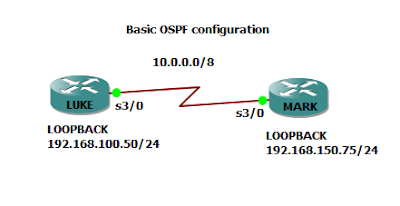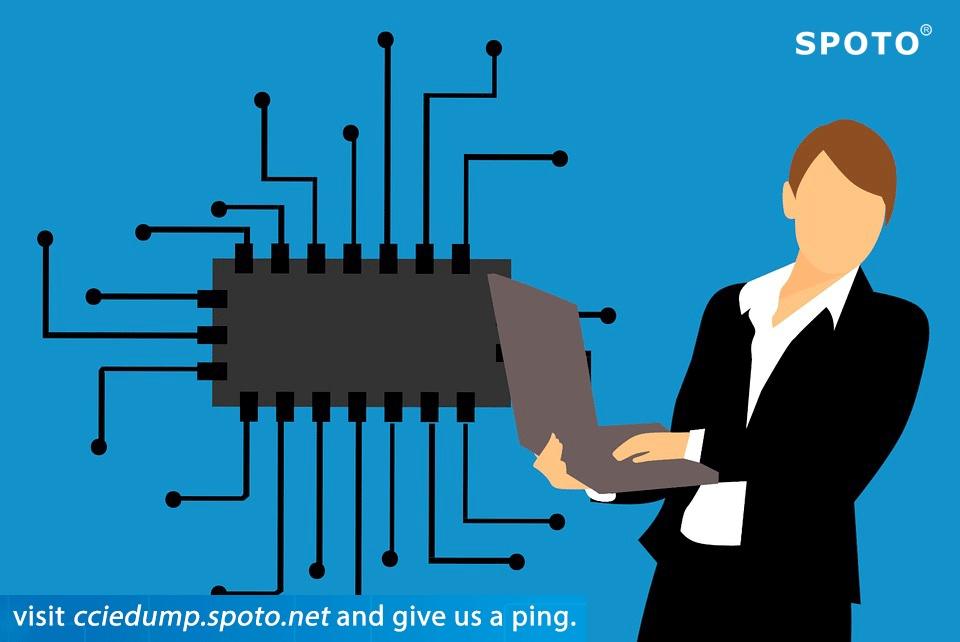SPOTO is a leader in IT technology training and will offer valuable certification exam materials to help you clear the exams in the first attempt. So many certifications are provided as CCIE, CCIE Lab, CCNA, CCNP, CISSP, AW, Redhat and online courses, specially CCIE RS Lab, CCIE DC Lab and so on. As the following is the introduction of OSPF.
Open Shortest Path First (OSPF)
Open Shortest Path First is an open standard routing protocol that has been implemented by various network providers including Cisco. Open standard features are key to OSPF flexibility and popularity. OSPF first constructs a shortest path tree using the Dijkstra algorithm and then populates the routing table with the best-generated route. Its rapid convergence is another reason why it is popular. The other two great advantages that OSPF provides are that it supports multiple routes to the same destination and supports both IPv4 and IPv6 routing protocols.
Here’s a list that summarizes some of OSPF features:
·Link-state routing protocol.
·Open standard (IETF)
·Allow for the creation of areas and autonomous system
·Minimize the routing update traffic
·It’s highly flexible, versatile, and scalable
·Support VLSM/CIDR
·Offers an unlimited hop count
Terminology
Link
a link is a network or router interface assigned to any given network. When an interface is added to the OSPF process, it’s regarded as a link.
Router ID
the router ID (RID) is an IP address used to identify the router. Cisco routers choose the router ID by using the highest IP address of all configured loopback interface. To router, ID is basically the “name” of each router.
Neighbor
neighbor are two or more routers that have an interface on a common network, such as two routers connected on a point-to-point serial link. OSPF neighbors must have a number of common configuration options to be able to successfully establishing a neighborship, and all of these options must be configured exactly the same way:
·Area ID
·Stub area flag
·Authentication (if using one)
·Hello and Dead intervals
Adjacency
An Adjacency is a relationship between two OSPF routers that allows a direct exchange of routing updates. OSPF only shares routes directly with neighbors that have established adjacencies. Not all router neighbors will become neighbors - depending on the type of network and the configuration of the router.
Designated router
When an OSPF router is connected to the same broadcast network, a designated router (DR) is selected to minimize the number of contiguous pairs formed and to expose the received routing information to the broadcast network or other routers on the link. The election is won according to the priority of the router, and the router with the highest priority will be the winner. If there is a tie, the router ID will be used to break it.
Backup designated router
a backup designated router is hot standby for the DR on broadcast, or multi-access, links. The BDR receives all routing update from OSPF adjacent routers but does not disperse LSA updates.
Hello protocol
the hello protocol provides dynamic neighbor discovery and maintains a neighbor relationship. Hello packets are sent to multicast address 224.0.0.5.
Neighbor database
the neighbor database is a list of all OSPF routers for which hello packets have been seen.
Topological database
the topological database contains information from all of the link state advertisement packets that have been received from an area.
Link state advertisement
A Link State Advertisement (LSA) is an OSPF packet that contains the link state and routing information shared between OSPF routers. LAS packets are used to update and maintain the topology database. There are different types of LSA packages.
OSPF area
an OSPF area is a grouping of contagious networks and routers.
Broadcast (multi-access)
broadcast multi-access networks such as Ethernet allow multiple devices to connect to or access the same network, enabling a broadcast ability in which a single packet is delivered to all nodes on the network.
Nonbroadcast multiaccess (NBMA)
the nonbroadcast multi-access network is networking such as frame relay, X.25, and Asynchronous Transfer Mode (ATM). These kinds of networks allow for multi-access without broadcast ability like Ethernet.
Point-To-Point
Point-To-Point refers to a type of network topology made up of a direct connection between two routers that provides a single communication path.
Point-to-multipoint
Point-to-multipoint refers to a type of network topology made up of a series of connections between a single interface on one router and multiple destination routers
OSPF Metric
OSPF uses a metric referred to as cost. A cost is associated with every outgoing interface include in an SPF tree. OSPF metric is not defined in standards, every vendor uses a different formula to calculate the metric. cisco uses a simple equation of 108/bandwidth.
Topology:

Goal: verifying reachability between routers LUKE and MARK with basic OSPF single area,
LUKE#show IP interface brief
Interface IP-Address OK? Method Status Protocol
Serial3/0 10.1.1.1 YES manual up up
Loopback0 192.168.100.50 YES manual up up
MARK#show IP interface brief
Interface IP-Address OK? Method Status Protocol
Serial3/0 10.1.1.2 YES manual up up
Loopback0 192.168.150.75 YES manual up up
LUKE(config)#router ospf 1
LUKE(config-router)#network 10.0.0.0 0.255.255.255 area 0
LUKE(config-router)#network 192.168.100.0 0.0.0.255 area 0
MARK(config)#router ospf 1
MARK(config-router)#network 10.0.0.0 0.255.255.255 area 0
MARK(config-router)#network 192.168.150.0 0.0.0.255 area 0
LUKE#show IP OSPF interface brief
Interface PID Area IP Address/Mask Cost State Nbrs F/C
Lo0 1 0 192.168.100.50/24 1 LOOP 0/0
Se3/0 1 0 10.1.1.1/8 64 P2P 1/1
MARK#show IP OSPF interface br
Interface PID Area IP Address/Mask Cost State Nbrs F/C
Se3/0 1 0 10.1.1.2/8 64 P2P 1/1
LUKE#ping 192.168.150.75
Type escape sequence to abort.
Sending 5, 100-byte ICMP Echos to 192.168.150.75, timeout is 2 seconds:
!!!!!
Success rate is 100 percent (5/5), round-trip min/avg/max = 4/27/68 ms
LUKE#traceroute 192.168.150.75
Type escape sequence to abort.
Tracing the route to 192.168.150.75
VRF info: (vrf in name/id, vrf out name/id)
1 10.1.1.2 52 msec 88 msec 24 msec
MARK#ping 192.168.100.50
Type escape sequence to abort.
Sending 5, 100-byte ICMP Echos to 192.168.100.50, timeout is 2 seconds:
!!!!!
Success rate is 100 percent (5/5), round-trip min/avg/max = 20/24/36 ms
MARK#traceroute 192.168.150.75
Type escape sequence to abort.
Tracing the route to 192.168.150.75
VRF info: (vrf in name/id, vrf out name/id)
1 192.168.150.75 8 msec 8 msec 8 msec

 Join Telegram Study Group ▷
Join Telegram Study Group ▷














